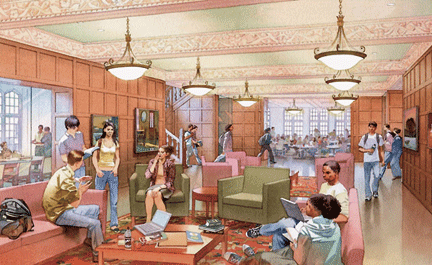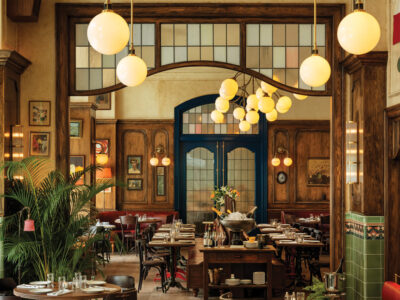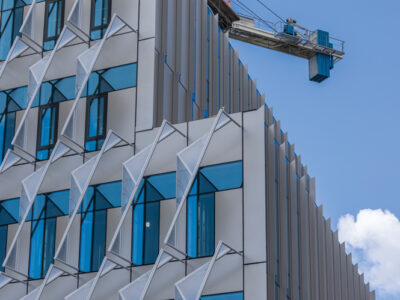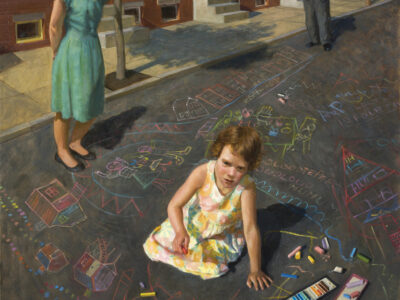
Built in 1929 as a towering exemplar of Gothic Revival architecture, these days the Arts, Research and Culture House (ARCH) is host to a bustle of activity. It houses the Center for Undergraduate Research and Fellowships (CURF) as well as three cultural centers: La Casa Latina, Makuu Black Cultural Center, and the Pan-Asian American Community House (PAACH). For a select group of student scholars, multicultural arts groups, and minority students, the building serves as a center for meetings, rehearsals, events and conferences.
But over the years, their building has been slowly crumbing around them.
That is about to change, thanks to a $15 million gift from an anonymous donor earlier this year to fund renovations. When the news was announced, the students and staff that occupied the building were jubilant.
This was a long time coming. One summer, recalls CURF director Harriet Joseph, she had to move her office to the third floor after the second floor flooded and was overrun with mold. The building also lacks basic amenities such as heating and air conditioning. “We don’t even have WiFi in here,” Joseph says.
The building also needs an elevator, “so that if we have handicapped kids who need to ask questions about University research or come to University Scholar lunches, they can actually get up here,” she adds. “Because right now they can’t, because the chairlift on the stairs doesn’t work.”
“It’s a beautiful building,” says Rob Nelson, associate director in the Office of the Provost. “But it’s also an old building.”
Nelson has been coordinating discussions with the students and staff who use the building the most. For a number of years, the minority coalitions housed in the ARCH have been advocating for a renovated home base.
In 2007, the University hired SaylorGregg Architects to conduct a feasibility study. The firm consulted with members of the minority groups and CURF in order to understand how the space was used.
The resulting study, completed in 2008, laid out a plan to update the building while preserving its historical features. The anonymous gift will enable its implementation.
“It’s been on the agenda for the Asian Pacific student coalition since I’ve been here,” says June Chu, director of PAACH. “It was always that we were waiting for a donation.”
The ARCH restoration will address a lengthy list of long-needed repairs.
An elevator will replace the chair lift, making the building compliant with the Americans With Disabilities Act. The addition of fire stairs will ensure that the building meets fire codes. Other improvements will include revamped mechanical and electrical systems, and the introduction of air conditioning. The renovations will preserve the building’s beautiful stained-glass windows while upping their thermal performance. The stone ornamentation on the building’s exterior, eroded from years of water damage, will be restored to its past glory.
The new plans also call for a bit of rearranging. The cultural centers will be moved from the first floor to the ground level, and the CURF offices will be split between the second and third floors. Memorial Hall, on the second floor, will become a multi-purpose lecture hall, banquet hall, and performance space, with telescopic seating that can easily fold in and out of the walls.
All the shifting around is meant to clear out the first floor, which will be converted into a wide-open lounge and study area, fitted out with a café and terrace seating. The new plans are designed to restore the building to its former status as a hub of Penn life.
The project, says University Architect David Hollenberg GAr’76, “will result in the building really singing again.”
Originally commissioned by the Christian Association, the building was completed in 1929. Though it wasn’t a University building, by dint of its central location on campus, it evolved into “a sort of hub of University life,” Hollenberg says.
Hollenberg glows with excitement when he talks about the building’s architecture. “There’s no room in the whole building that does not have architectural character,” he says.
The building is listed on the Pennsylvania Register of Historic Places.
Hollenberg was a graduate student in the 1970s, when the building still housed the Christian Association. He reckons that it was the only building—other than the Design School and the Fine Arts Library—where he spent any significant amount of time.
The ground level used to be a restaurant, known for its whole-wheat pizza and vegetarian offerings. “You could [also] get a really bad egg-salad sandwich,” Hollenberg laughs.
Later on, a more upscale restaurant and bar opened in the building. “The Palladium and the Gold Standard,“ Hollenberg recalls. “It had a very faculty-like atmosphere. You know, dark paneling.”
“It was a busy place,” he adds.
The current renovation plans envision a revitalized ARCH that draws in the crowds like it used to.
Chu has high hopes. “A nicer building will really attract more students to our space, and get our names out there for all three cultural centers,” she says. The new space will be especially useful, according to Chu, because she has seen an increase in the number of minority groups over the past few years. “There were, at last count, about 65 Asian or Asian-American groups that we could potentially advise.”
The minority groups hope to collaborate as much as possible with the University administration to ensure that the renovated ARCH meets the needs of their growing constituencies, according to senior Nicky Singh, chair of the Asian Pacific Students Coalition.
Hollenberg is convinced that the students will like their new space better once it is restored.
Overall, Singh says he’s happy with the plans to make the building more comfortable and welcoming. “It’s a very important building for all of us,” he says.
—Maanvi Singh C’13




